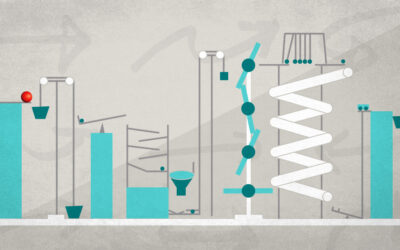“Hardware is the new app” is something you hear regularly in the Silicon Valley. And it really is a valid statement. With the introduction of the smartphone 10 short years ago, the app took software off computers and company networks and put it into the hands of everybody doing every activity every day. As long as you have a (smart) phone, there is an app for everything.
Now, with decreasing costs for sophisticated computer chips; a global ecosystem for prototyping and manufacturing physical goods; and global connectivity over wifi, Bluetooth, 3G, LTE, and emerging protocols like 5G, Lora, Zigbee, and others, we have smart hardware that is truly as ever-present in our lives as our phones and apps. Smart speakers, doorbells, thermostats, planters, lights, faucets, cars, clothes, appliances, sports balls, coffee cups, etc., are all evolving our expectations of the once inanimate objects around us. This is true in the business sector as well — manufacturing, farming, medicine, construction, etc., are adding all sorts of connected devices to make processes more effective.
This is why we’re seeing such an opportunity with software-driven hardware — that is, hardware powered by software and connectivity to the internet. A significant advantage of software-driven hardware is that it can leverage all of the flexibility of software to work effectively. The more capability — features, functions, user interactions — that you can build into the software, the more flexibility you have in the product. By product, we mean the hardware and the software together. A smart doorbell is not the just the doorbell button — it’s the app on your phone, the cloud backend that stores the history of button pushes, and the video if there’s also a camera. The smart doorbell is all of the parts together, software and hardware.
Another example would be Tesla cars, which are heavily dependent on software, offering new features in existing cars via software update: better power management, more speed from the same motor, faster charging, new functions on the big-screen dashboard, even fixes to “bugs” like the gull-wing doors not closing correctly on early versions of the X.
We’ve seen that technology development consulting firms are rapidly adapting to the needs of the market. Accenture, known for major software projects in the ERP and B2B-driven 90s and Y2K-driven 00s, is adding hardware capabilities. Accenture bought MindTribe, a leading hardware engineering firm. McKinsey bought Lunar, a leading industrial design and engineering firm. Avnet, a major components distributor, bought Dragon innovation, also a leading hardware engineering firm.
With the rapid evolution in expectations around what the technology around us can do comes new challenges for the firms building that technology. At Art+Logic, we understand that today’s software-driven hardware has to have the right blend of software and hardware, and you can only get that blend right if you have software and hardware engineering under one roof. That’s how you create products that delight customers, and custom solutions that deliver for end users.
Legacy Vulnerabilities AKA Software Senescence
Does your business still have an XT computer in the back office because it's running that one version of some database software that your business depends on? Yeah, we know there is. Most modern software doesn't work like that. If you aren't keeping your custom...



